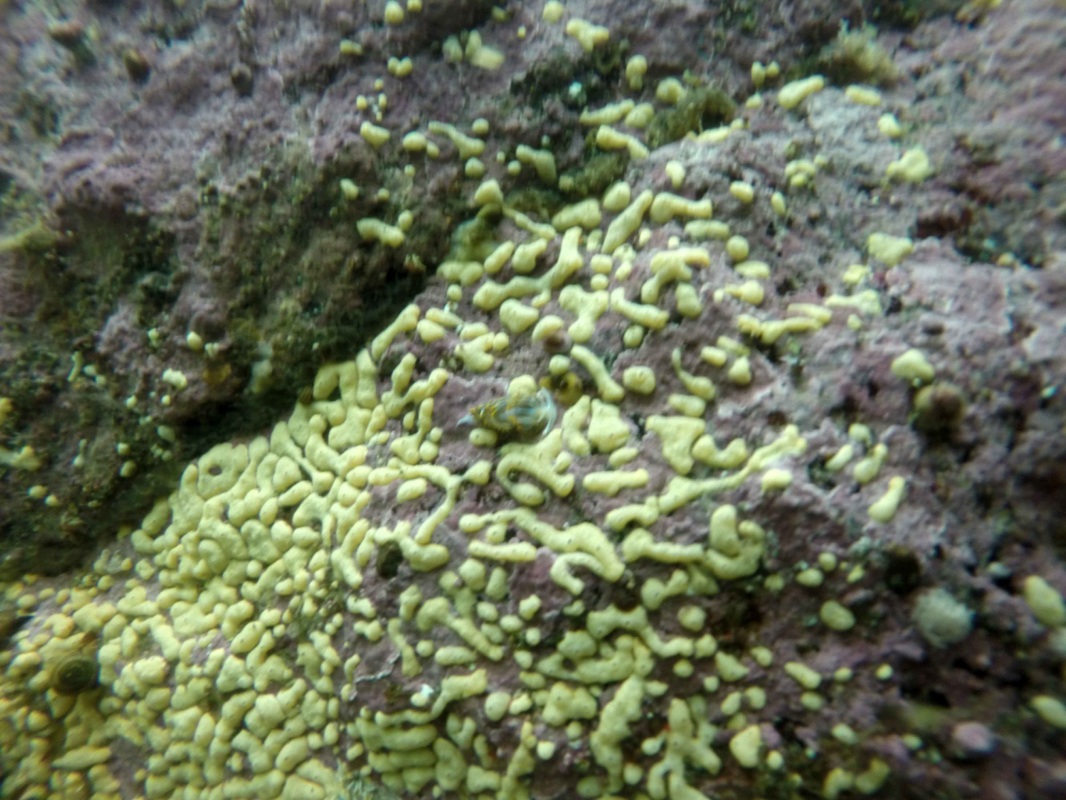Pacific white crust • Didemnum carnulentum
Identification
This pale orange (sometimes almost white) compound tunicate grows in groups of many small, thin, and rounded but irregularly-shaped colonies measuring up to 12.5 cm across (may be long and narrow). These colonies are dotted with many small holes and a few larger openings (cloacal apertures). Some of the structure of these colonies comes from microscopic spiky spicules.
Habitat & Range
Pacific white crust, a common species in kelp forest habitats, grows on rocks in the intertidal and subtidal to 30 m deep. Its recorded range extends from the Central Coast of BC to Panama.
Similar Species
Similar-looking compound tunicates, such as Trididemnum opacum and other Didemnum species, grow in more continuous colonies. The former also has fewer large openings and is commonly a greyish or brownish colour.
This pale orange (sometimes almost white) compound tunicate grows in groups of many small, thin, and rounded but irregularly-shaped colonies measuring up to 12.5 cm across (may be long and narrow). These colonies are dotted with many small holes and a few larger openings (cloacal apertures). Some of the structure of these colonies comes from microscopic spiky spicules.
Habitat & Range
Pacific white crust, a common species in kelp forest habitats, grows on rocks in the intertidal and subtidal to 30 m deep. Its recorded range extends from the Central Coast of BC to Panama.
Similar Species
Similar-looking compound tunicates, such as Trididemnum opacum and other Didemnum species, grow in more continuous colonies. The former also has fewer large openings and is commonly a greyish or brownish colour.
References
Lamb, A., and Hanby, B. (2005). Marine Life of the Pacific Northwest [electronic version]. Madeira Park, BC: Harbour Publishing.
Watanabe, J. M. (2011). Phylum Chordata, Subph. Urochordata: Subtidal Tunicates. SeaNet: Common Marine Organisms of Monterey Bay, California. Stanford University, Stanford, CA. Accessed 01/12/2015.
Authors and editors of page
Kelly Fretwell (2015).
Lamb, A., and Hanby, B. (2005). Marine Life of the Pacific Northwest [electronic version]. Madeira Park, BC: Harbour Publishing.
Watanabe, J. M. (2011). Phylum Chordata, Subph. Urochordata: Subtidal Tunicates. SeaNet: Common Marine Organisms of Monterey Bay, California. Stanford University, Stanford, CA. Accessed 01/12/2015.
Authors and editors of page
Kelly Fretwell (2015).




